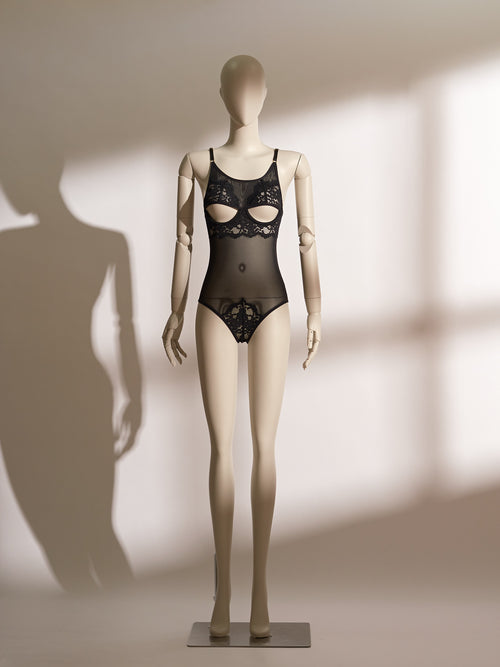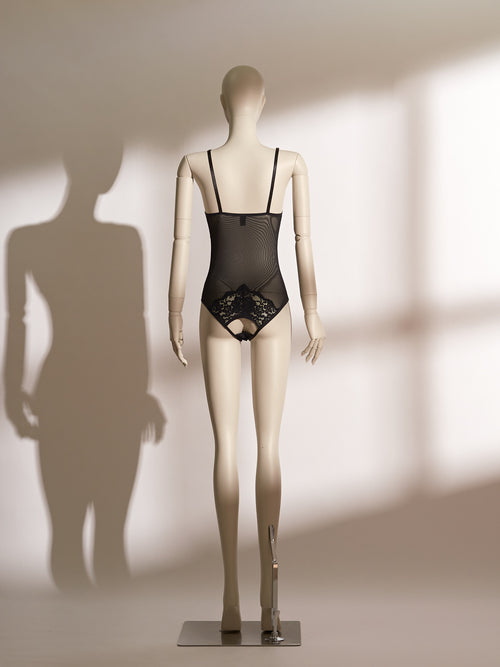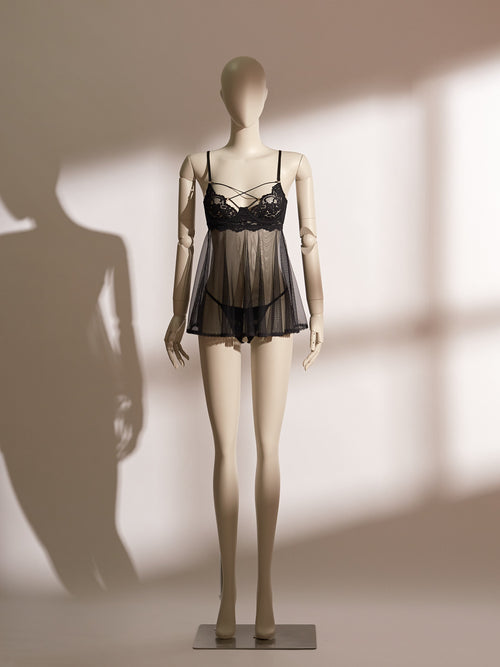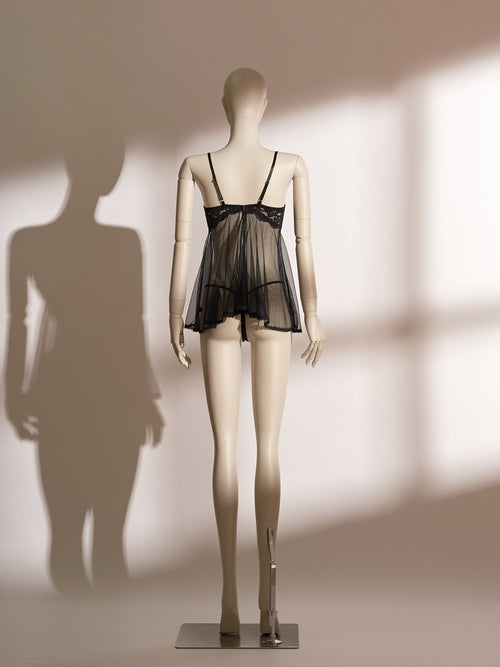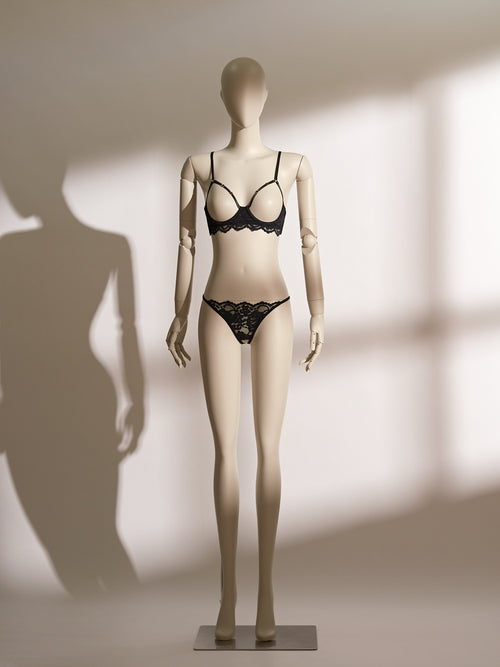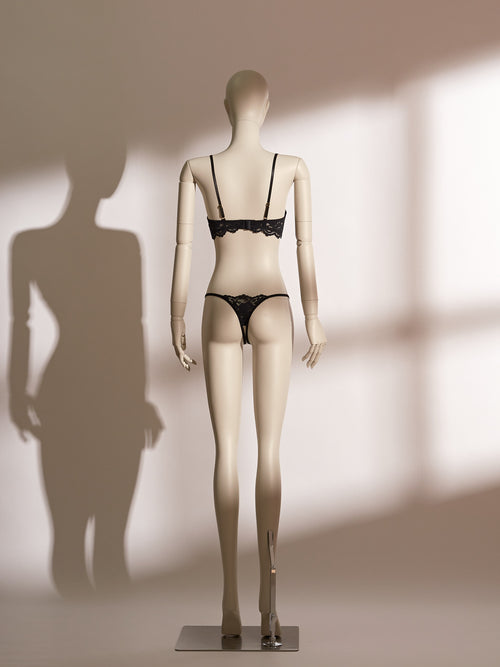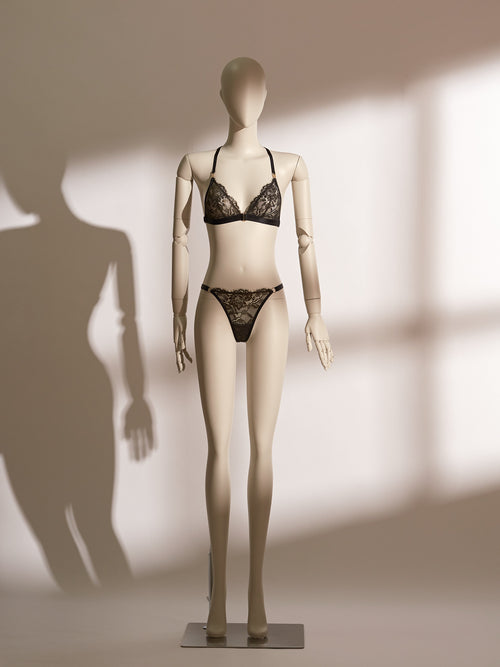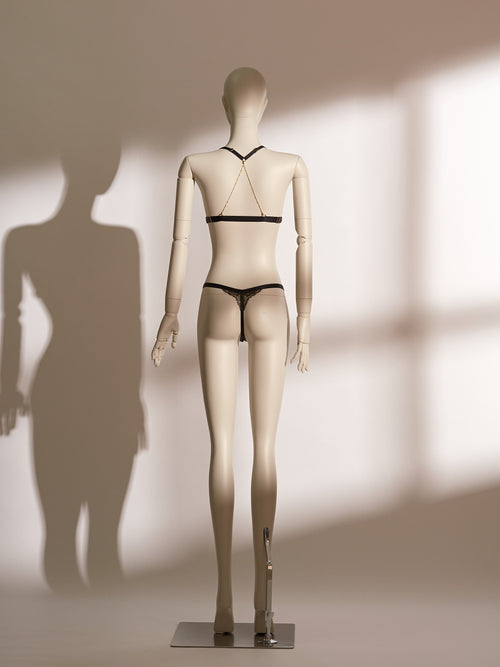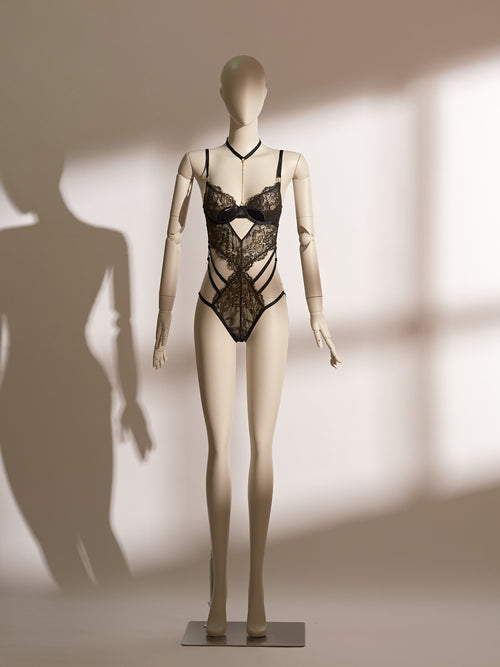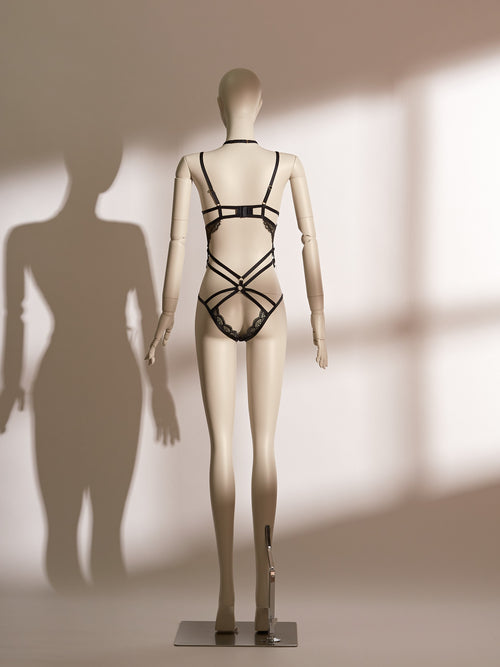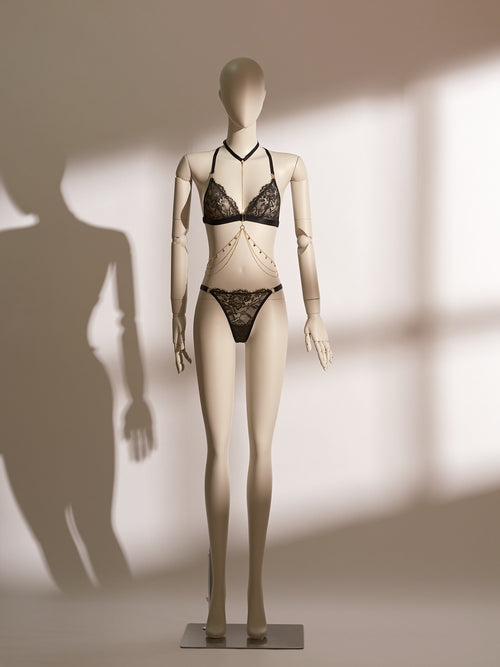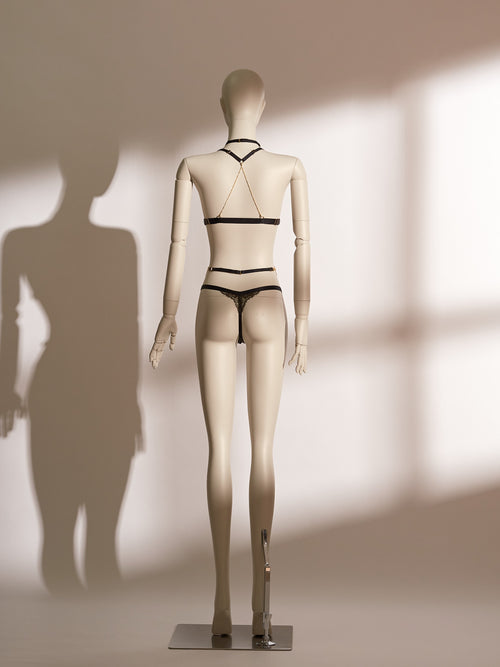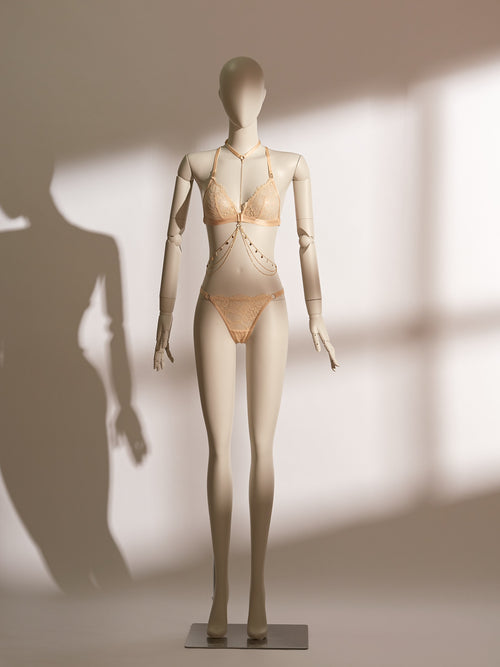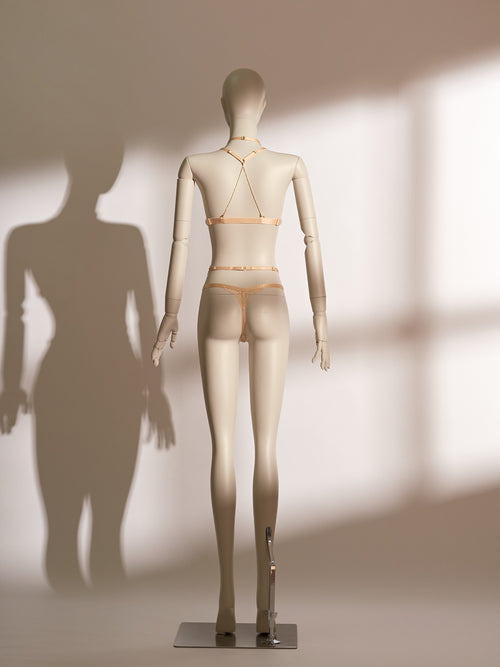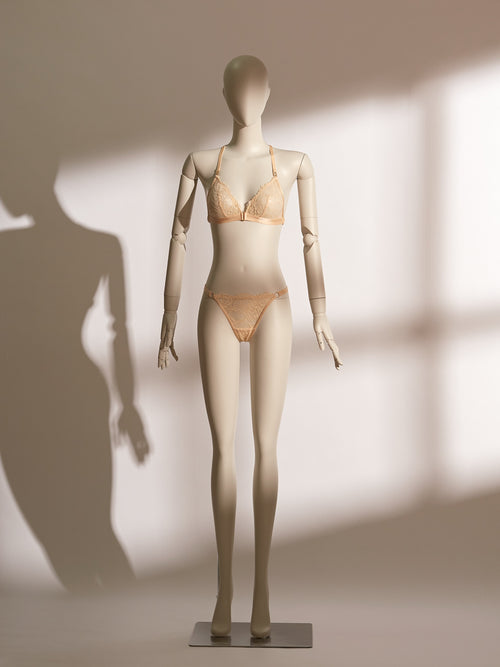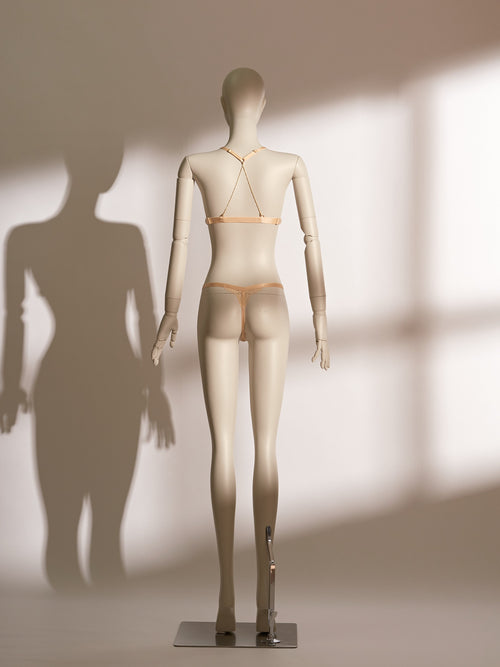Welcome to our store
AI-generated lingerie has undeniably lowered the barrier to entry for design. With the right prompts, anyone — even those without formal training — can produce visually striking concepts. For some, this is an exciting democratization of creativity; it allows newcomers to participate in, or at least experience, fashion design in a way that was once the preserve of professionals. In the intimate apparel sector, especially sexy lingerie, it has sparked curiosity and experimentation.
Yet the same technology that opens the door also floods the room. AI-generated imagery adds an unprecedented volume of “noise” to the design landscape. The sheer output can dilute the professional value of design, undermining the discipline, rigor, and scientific grounding that have always set true creative work apart from visual novelty.
Why Design Still Demands More Than Pretty Pictures
Fashion design — and lingerie design in particular — is far more than the aesthetic surface. It is an intricate, multidisciplinary process that requires mastery across color theory, fabric science, human anatomy, art history, cultural context, and the psychology of intimacy. It is also rooted in an intimate understanding of manufacturing techniques, construction methods, and wearability. In many ways, lingerie is as much an engineering challenge as an artistic one.
While AI can digest and recombine vast visual datasets, its current capabilities remain almost entirely image-based. It has no practical grasp of the tactile, structural, or technical realities of bringing a garment to life. It cannot yet evaluate stretch recovery in lace, the load distribution of straps, or the precise balance between elasticity and durability in undergarment construction. Without this closed-loop logic — one that connects design ideation seamlessly to production feasibility — AI-generated lingerie will remain a game of curiosity rather than a driver of true productive forces.

The Real Bottleneck Is Not Creativity — It’s Production
Contrary to the narrative that design is the primary bottleneck in fashion, the greater constraint lies in manufacturing. For decades, many countries have gradually neglected their apparel industries. Investors avoid the sector due to thin profit margins, unstable policy environments, and the high operational risk of maintaining skilled labor and local production. Supply chains have been restructured for cost, not resilience; the talent pool has been hollowed out; and the infrastructure for high-quality garment production is shrinking.
In this environment, the “easiest” part of lingerie — generating visual design concepts — has become easier still with AI. But the “hardest” part — turning those designs into tangible, high-quality garments — has only grown harder. The imbalance is stark: creative output has been amplified, while the capacity to realize those ideas at scale and with precision has diminished.
Where AI Could Actually Transform the Industry
The real promise of AI in fashion is not in replacing designers, but in strengthening the backbone of the industry — the industrial R&D and production stages that make great design possible. This means AI applications in:
· Fabric and material innovation — discovering new fibers, blends, and finishes with better performance and comfort.
· Process optimization — improving cutting, assembly, and finishing techniques for greater efficiency and reduced waste.
· Accessory and component engineering — from underwires to closures, enhancing the durability, comfort, and aesthetics of lingerie hardware.
· Predictive production planning — aligning manufacturing capacity with demand forecasts to reduce overproduction and stockouts.
These are the areas where AI could truly deliver productivity gains and restore vitality to a manufacturing base that has been steadily eroded.
A Tool for Enhancement, Not Replacement
Sexy lingerie is not a product of algorithms — it is a product of culture, craft, and human intimacy. It reflects values, aesthetics, and the unspoken language between the wearer and their own body. AI, in its current form, can generate seductive visuals, but it cannot imbue them with the lived understanding of proportion, touch, or movement that defines great lingerie.
In the long term, the healthiest role for AI in this industry will be as an enhancer of human capability — making it easier for designers to prototype, for factories to adapt, and for supply chains to become more resilient. Until then, AI-generated lingerie will remain a curiosity — eye-catching, sometimes clever, but only one small fragment of what it truly takes to create intimate apparel that matters.
If this speaks to you, come explore our own approach to lingerie. At Mismuse, we believe in ethically made lingerie, precision, pleasure, and the power of garments that make you feel unmistakably yourself.




